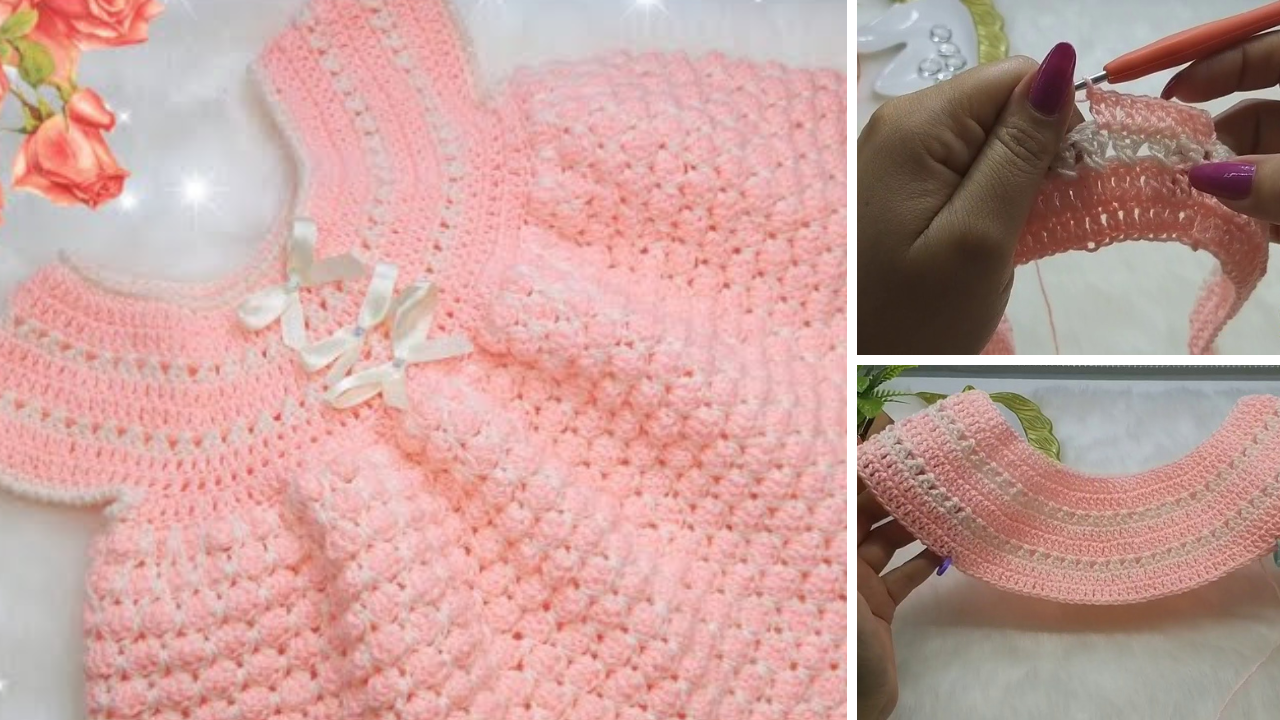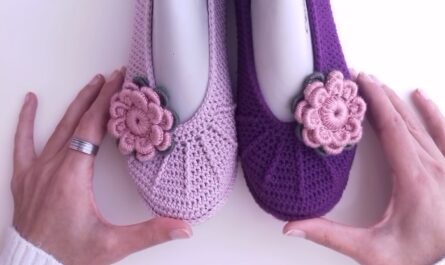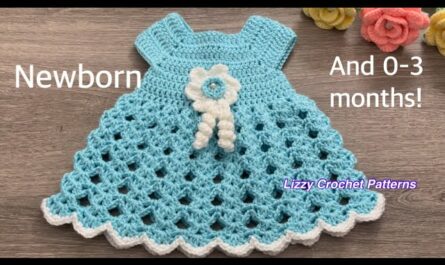Desert Dreams in Yarn: Crocheting the Moroccan-Style Dress
The allure of Moroccan fashion is undeniable – a captivating blend of rich history, vibrant colors, intricate patterns, and relaxed elegance. From the flowing silhouettes of kaftans and djellabas to the dazzling mosaic work (zellige) and opulent embroidery, Moroccan design speaks of exotic beauty and artisanal craftsmanship. Translating this distinct aesthetic into a crochet dress is an ambitious yet incredibly rewarding endeavor, allowing crafters to weave threads of cultural richness into a truly unique and luxurious garment.
A Moroccan-Style Crochet Dress is more than just clothing; it’s a wearable piece of art, combining the comfort of crochet with the mystique and grandeur of North African design. This detailed article will guide you through the conceptualization, techniques, and sheer joy of creating such a magnificent garment.
The Enchanting Appeal of the Moroccan-Style Crochet Dress
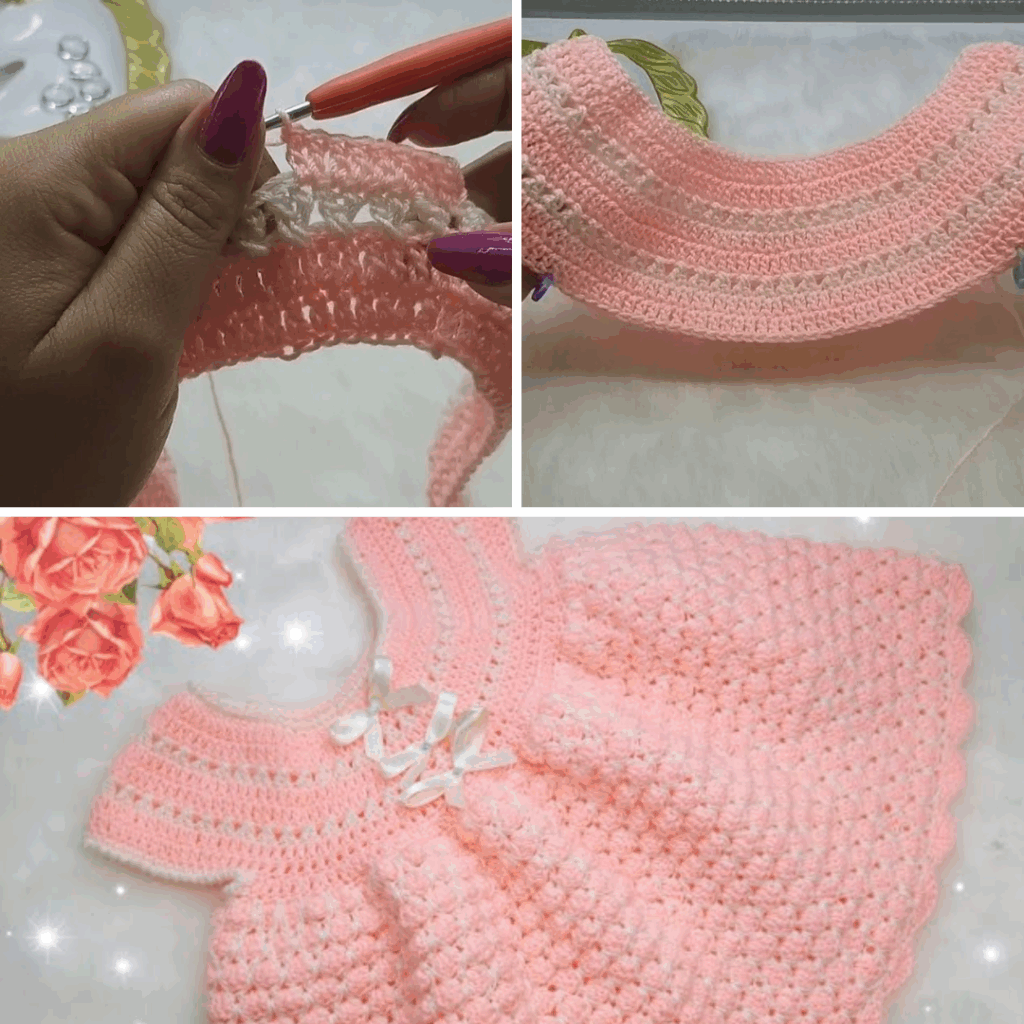
- Bohemian Luxe: It perfectly balances relaxed comfort with an air of opulence, making it ideal for resort wear, special events, or simply elevated everyday style.
- Cultural Richness: This style celebrates the intricate artistry and vibrant heritage of Moroccan design, allowing you to infuse your crochet with meaningful patterns and colors.
- Unique Silhouette: Typically characterized by its loose, flowing lines and generous drape, it offers a distinctive and flattering alternative to more structured Western dresses.
- Statement Piece: With its bold colors, unique patterns, and often elaborate embellishments, a Moroccan-style crochet dress is sure to turn heads and spark conversation.
- Artistry of Crochet: It’s an opportunity to showcase advanced crochet techniques, from complex colorwork to textured stitches and intricate edgings.
Key Design Elements Inspired by Moroccan Aesthetics
To truly capture the essence of Moroccan style in your crochet dress, consider these defining features:
- Silhouette & Drape:
- Kaftan/Djellaba Influence: Think long, flowing lines, often with wide, relaxed sleeves. The dress should have generous positive ease, allowing it to move fluidly around the body rather than clinging.
- Length: Maxi length is most common, extending to the ankles or floor, enhancing the sense of grandeur and flow.
- Side Slits (Optional): Traditional kaftans often feature side slits for ease of movement; these can be incorporated into the crochet design.
- Color Palette: This is paramount to achieving the Moroccan look.
- Jewel Tones: Deep emerald green, sapphire blue, ruby red, amethyst purple.
- Spice Colors: Saffron yellow, turmeric orange, cinnamon brown, rich terracotta.
- Earthy Neutrals: Cream, sand, deep charcoal, olive green.
- Metallic Accents: Gold or silver threads (lurex yarn) can be incorporated subtly to mimic traditional embroidery or jewelry.
- Intricate Patterns & Textures: Moroccan design is renowned for its elaborate surfaces.
- Geometric Patterns: Inspired by zellige tilework, use mosaic crochet, tapestry crochet, or intarsia to create repeating geometric motifs.
- Trellis/Lattice Patterns: Openwork stitches can mimic architectural elements.
- Surface Embroidery: After the main fabric is crocheted, add intricate designs using surface crochet stitches (slip stitch, chain stitch) or traditional embroidery with yarn or metallic threads.
- Rich Stitches: Puff stitches, bobbles, clusters, or post stitches can add textural depth, mimicking raised embroidery or brocade.
- Necklines & Sleeves:
- Neckline: Often features a slit neckline, a keyhole, or a simple round neck that is heavily embellished.
- Sleeves: Wide, flowing sleeves are characteristic – consider bell sleeves, dolman sleeves, or simple straight sleeves with ample room for movement.
- Embellishments: These details elevate the garment from a dress to a work of art.
- Tassels: Handmade tassels (yarn or silk) are frequently seen on kaftans, adorning neck ties, sleeve edges, or the hem.
- Braids & Cords: Crocheted i-cords or braided yarns can be used for neck ties or decorative elements.
- Beads: Subtly integrated beads (ensure they are securely sewn) can add a shimmering touch.
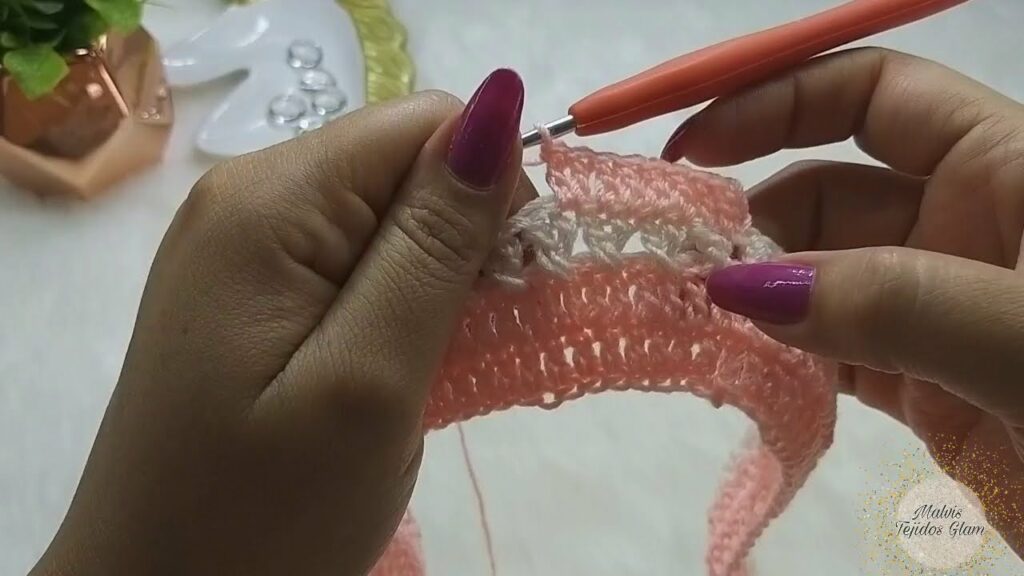
Why Create a Moroccan-Style Crochet Dress?
- Artistic Challenge: It’s a complex project that pushes your crochet skills in colorwork, shaping, and detailed finishing.
- Unique Wardrobe Addition: You’ll own a one-of-a-kind garment that is deeply personal and visually striking.
- Cultural Appreciation: It’s a beautiful way to engage with and celebrate the rich artistic traditions of Morocco.
- Personalized Wear: You can customize every aspect, from fit and length to specific patterns and embellishments, to perfectly suit your style.
Materials: Your Bazaar of Crafting Essentials
- Yarn: Your chosen fiber, weight, and color palette. A full-length dress will require a substantial amount of yarn, especially if incorporating multiple colors or textured stitches. Prioritize yarns known for their drape and softness.
- Crochet Hooks: The size(s) recommended by your pattern to achieve the correct gauge and fabric density for the desired drape and stitch definition.
- Stitch Markers: Indispensable for marking rounds, shaping points, color changes, and pattern repeats in complex designs.
- Tapestry Needle (or Blunt Yarn Needle): Crucial for weaving in ends neatly (especially with colorwork) and for meticulous seaming.
- Scissors.
- Measuring Tape: Essential for detailed body measurements, gauge swatching, and checking garment dimensions as you go.
- Blocking Mats & T-pins: Absolutely paramount for shaping, setting the final dimensions, and opening up intricate patterns to enhance drape.
- Optional Embellishments: Beads (ensure they are washable and colorfast), cording for tassels/braids, or specific embroidery floss if adding surface details.
Essential Crochet Techniques for a Moroccan-Style Dress
This project will draw upon a wide array of crochet skills, pushing you to master both basic and advanced techniques:
- Foundation Chains / Foundation Single Crochet (FSCs): For a flexible and neat starting edge, particularly important for necklines or hems.
- Basic Stitches: Chain (ch), Slip Stitch (sl st), Single Crochet (sc), Half Double Crochet (hdc), Double Crochet (dc) – the building blocks of most patterns.
- Advanced Colorwork:
- Mosaic Crochet: Creating geometric patterns by working one color at a time, using slip stitches and simple stitches to skip and pick up previous rows.
- Tapestry Crochet: Carrying unused colors through the stitches to create dense, graphic patterns.
- Intarsia Crochet: Working with distinct blocks of color, dropping and picking up yarn strands as needed.
- Textured Stitches: Puff stitches, bobbles, cluster stitches, and various post stitches (front post/back post) to create raised, tactile designs.
- Openwork / Lace: V-stitch, shell stitch, trellis patterns, or filet crochet to add lightness, breathability, and intricate visual appeal.
- Working in Rounds vs. Rows: Depending on whether your dress is seamless or constructed from panels.
- Garment Shaping: While Moroccan-style dresses are often loose, subtle shaping (e.g., gentle increases for the hips, shaping for armholes and necklines) is still essential for a flattering fit.
- Seamless Joins / Invisible Seams: Strive for seamless construction where possible. For seamed panels, master techniques like the mattress stitch for a smooth, unnoticeable finish.
- Elaborate Edging: Learning how to create decorative borders for necklines, cuffs, and hems, often incorporating shell stitches, picots, or small fringe.
- Tassel and Braid Making: Techniques for creating yarn tassels and braided cords, and securely attaching them.
- Blocking: This is non-negotiable. It truly transforms the crochet fabric, evens out stitches, opens up lace patterns, enhances drape, and sets the final elegant shape of the dress.
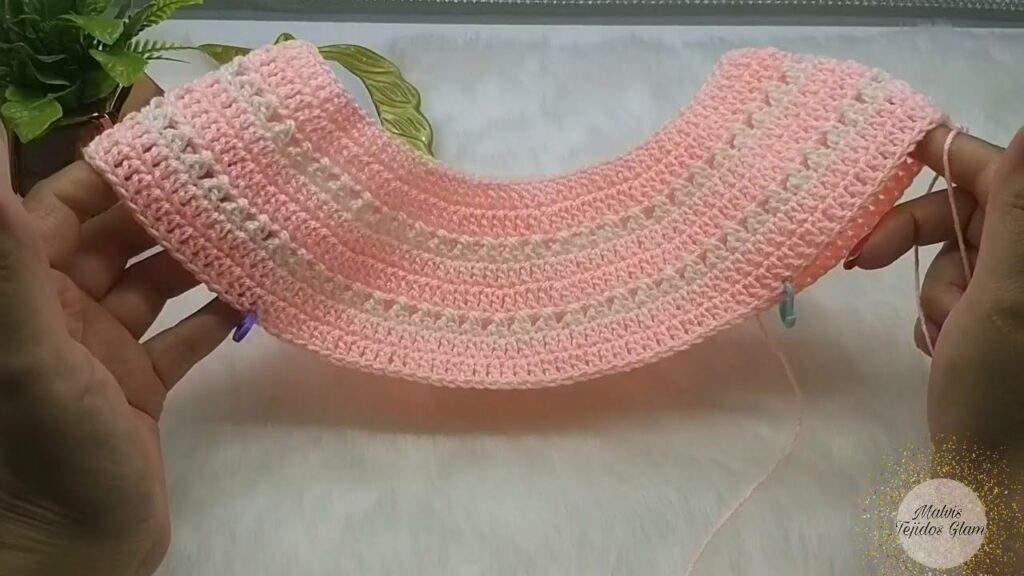
Planning Your Project: Laying the Foundation for Exotic Flow
- Sizing & Measurements:
- Take precise body measurements: full bust, waist, hips, shoulder width, desired dress length, and arm length.
- Crucially, determine the amount of positive ease you desire. A Moroccan-style dress traditionally has generous ease for a relaxed, flowing look.
- Consult pattern sizing charts carefully, as fit will differ significantly from Western-style garments.
- Gauge Swatch (The Golden Rule!):
- Crochet a substantial swatch (at least 6×6 inches / 15×15 cm) in your main stitch pattern (especially if it’s a complex colorwork or lace pattern) with your chosen yarn and hook.
- Wash and block your swatch exactly as you plan to finish the dress. This is absolutely vital, as yarns designed for drape and intricate patterns can change significantly after laundering and blocking.
- Measure your stitches and rows per inch/cm accurately. Adjust your hook size if your gauge doesn’t match the pattern’s.
- Yarn Quantity: A full-length dress, especially with complex patterns or multiple colors, will require a substantial amount of yarn. Always buy an extra skein (or two) to ensure you don’t run out, particularly for specific dye lots.
- Pattern Selection/Adaptation: For such a complex garment, a well-written pattern specifically designed for a Moroccan-style crochet dress is highly recommended. Alternatively, experienced designers can adapt existing kaftan or tunic patterns, focusing on incorporating the unique Moroccan elements.
Construction Journey: Weaving Desert Dreams into Fabric (Conceptual Guides)
The construction method will depend on your chosen pattern (top-down, bottom-up, or seamed panels):
- Bodice / Upper Section:
- Begin by establishing the neckline (often with a slit or keyhole).
- Work the upper body, incorporating subtle shaping for the shoulders and bust if desired, while allowing for generous ease.
- This is where your primary colorwork or textured patterns will begin.
- Main Body / Skirt:
- Continue working the dress in the round (or flat panels to be seamed later) for the full length.
- Maintain the flowing silhouette, perhaps with very gradual increases or simply allowing the drape of the yarn and stitch to create the desired flare.
- Crucially, ensure your chosen intricate patterns are consistent and align beautifully throughout this large section.
- Sleeves:
- Sleeves can be worked directly from the armholes in the round (seamlessly) or crocheted flat and then seamed into place.
- Focus on creating wide, comfortable sleeves, possibly with a bell shape towards the cuff.
- Finishing Borders:
- This is where the dress truly takes on its Moroccan character.
- Create elaborate borders for the neckline, sleeve cuffs, and hem, often using contrasting colors, metallic threads, or highly textured stitches.
- Embellishments:
- Once the main dress is complete, add your handmade tassels to ties, sleeve ends, or the hem.
- Integrate any beads by securely sewing them onto the fabric.
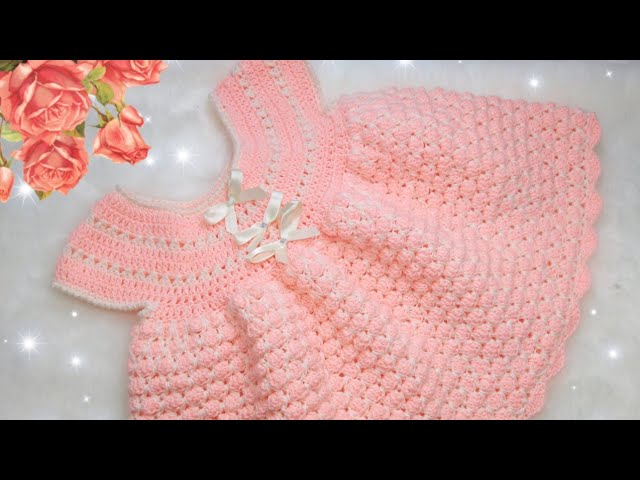
Finishing Touches: The Whisper of Opulence
- Weaving in All Ends: Meticulously weave in every single yarn tail. With multi-color patterns, this step is particularly critical for a clean finish.
- Elaborate Edging: Ensure all edges – neckline, armholes, sleeves, and hem – are finished with your chosen decorative border.
- Blocking (The Ultimate Transformation!):
- Gently wet your finished dress (or steam it).
- Carefully lay it out flat on blocking mats, shaping it precisely to its intended dimensions. Pay extreme attention to opening up lace patterns, defining geometric motifs, and encouraging the beautiful, fluid drape of the fabric. Pin firmly with T-pins.
- Allow to dry completely (this can take significant time for a full dress). Blocking dramatically improves stitch definition, evens out tension, enhances drape, and sets the final, elegant shape of your Moroccan-style dress.
- Attaching Tassels, Braids, and Beads: Securely attach all your chosen embellishments after blocking.
Styling Your Moroccan Masterpiece
Your crocheted Moroccan-style dress is a statement piece on its own. Pair it with:
- Simple Sandals or Espadrilles: For a relaxed, bohemian look.
- Statement Jewelry: Gold or silver ethnic-inspired pieces.
- Simple Undergarments: As the dress itself is often intricate.
- Layering: For cooler weather, a lightweight long-sleeved top underneath can work.
Tips for Moroccan Dress Success
- Yarn for Drape is King: No matter how beautiful your stitches, if the yarn doesn’t drape well, the dress won’t capture the flowing Moroccan aesthetic.
- Master Your Colorwork: Practice mosaic, tapestry, or intarsia techniques on swatches before committing to the full garment.
- Embrace the Details: The intricate patterns and embellishments are what define this style. Give them your full attention.
- Plan Embellishments Carefully: Consider the weight and placement of tassels and beads to ensure they enhance, not detract from, the dress.
- Patience for a Large Project: A full-length dress with intricate details is a significant undertaking. Enjoy the process and take breaks.
- Block, Block, Block! This cannot be overstressed for a garment like this; it will truly make your work shine.
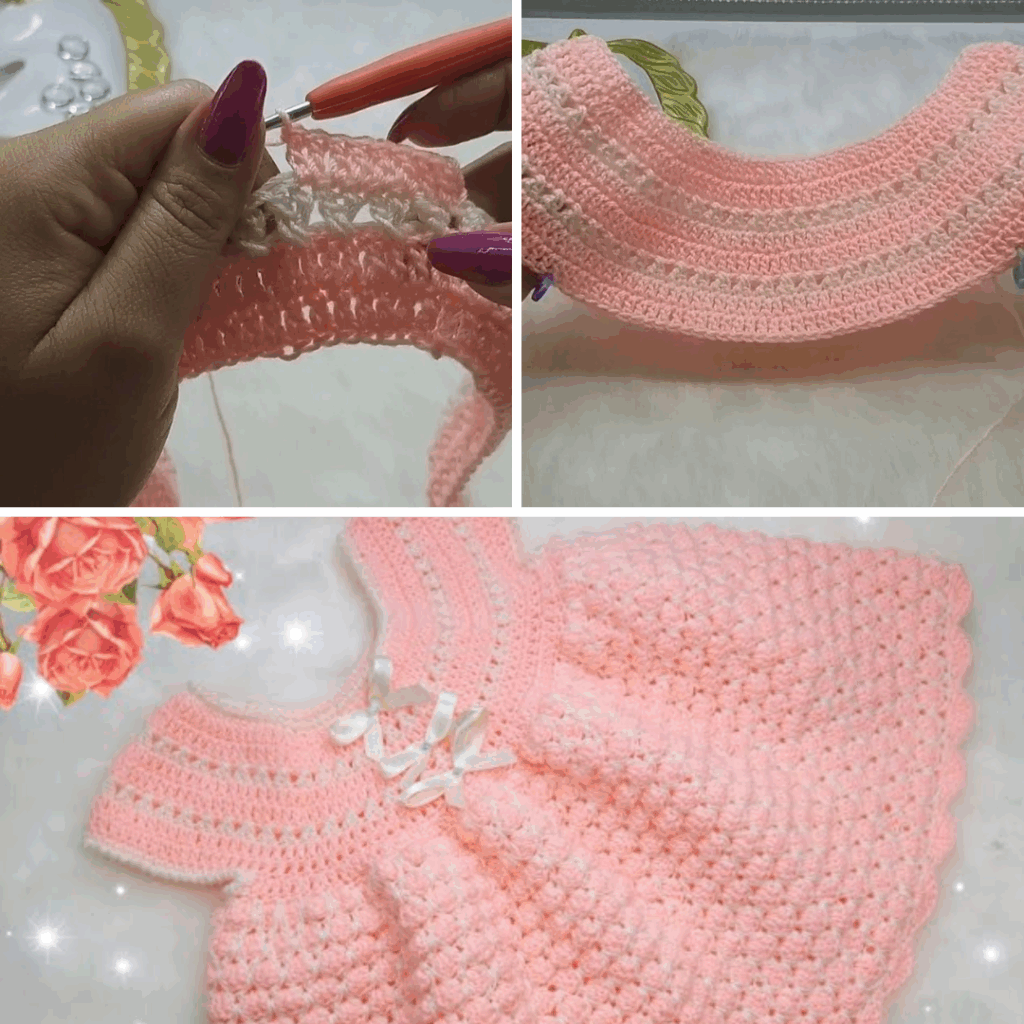
Caring for Your Cultural Creation
- Follow Yarn Label Instructions: Always refer to your specific yarn’s care guidelines for washing and drying.
- Gentle Hand Wash Recommended: For delicate handmade dresses, especially those with intricate colorwork or embellishments, hand washing in cool water with a mild detergent is safest. Avoid harsh wringing or twisting.
- Reshape and Lay Flat to Dry: Never hang a wet crocheted dress, as this will cause stretching and distortion. Gently squeeze out excess water (rolling in a clean towel helps), reshape the dress to its original dimensions, and lay it flat on a clean towel or a mesh drying rack to air dry completely.
Crocheting a Moroccan-style dress is an adventurous and profoundly rewarding journey. It’s a project that showcases advanced skills and results in a magnificent garment that speaks of artistry, cultural connection, and timeless elegance.
Video Tutorial ;
